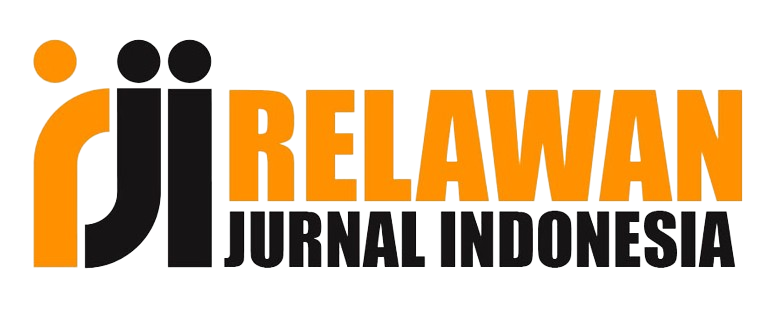Effect of Adsorbent Mass and Contact Time on the Removal of Iron (Fe) Metal Ions from Palm Kernel Shells using an Adsorption Column
Keywords:
Adsorption, Activated Carbon, Heavy Metals, Isotherm ModelAbstract
Palm kernel shell is a waste produced by industrial processing. Its utilization is still widely open as a purification of water, oil, juice, and other uses. This study aims to utilize palm kernel shells as activated carbon for the removal of the Fe metal adsorption process following the isothermal model. The methods used include carbonization, activation, and characterization tests. For the sorption process using carbon mass variations 262; 264; 266; 268; 270; 272; 274; 276 and 278 grams and contact time variations of 15; 20; 25; 30; 35; 40; 45; 50; 55 and 60 minutes. The results of Fe metal removal were analyzed by AAS to obtain an absorption efficiency of 97% at a mass of 278 grams and 89.6% at an optimum time of 25 minutes. The Langmuir isotherm equation obtained adsorption capacity of 0.0139 mg/g and 0.064 mg/g and Freundlich of 92.89 mg/g and 3605.7 mg/g.
References
R. R. Karri and J. N. Sahu, “Process optimization and adsorption modeling using activated carbon derived from palm oil kernel shell for Zn (II) disposal from the aqueous environment using differential evolution embedded neural network,†J. Mol. Liq., vol. 265, no. 1, pp. 592–602, 2018, doi: 10.1016/j.molliq.2018.06.040.
A. Khamwichit, W. Dechapanya, and W. Dechapanya, “Adsorption Kinetics and Isotherms of Binary Metal Ion Aqueous Solution Using Untreated Venus Shell,†Heliyon, vol. 8, no. 6, p. e09610, 2022, doi: 10.1016/j.heliyon.2022.e09610.
V. Nejadshafiee and M. R. Islami, “Adsorption Capacity of Heavy Metal Ions Using Sultone-Modified Magnetic Activated Carbon as a Bio-Adsorbent,†Mater. Sci. Eng. C, vol. 101, no. 3, pp. 42–52, 2019, doi: 10.1016/j.msec.2019.03.081.
Hisbullah, S. Kana, Nabila, and M. Faisal, “Characterization of Physically and Chemically Activated Carbon Derived From Palm Kernel Shells,†Int. J. GEOMATE, vol. 23, no. 97, pp. 203–210, 2022, doi: 10.21660/2022.97.7554.
E. Baffour-Awuah, S. A. Akinlabi, T. C. Jen, S. Hassan, I. P. Okokpujie, and F. Ishola, “Characteristics of Palm Kernel Shell and Palm Kernel Shell-Polymer Composites: A Review,†IOP Conf. Ser. Mater. Sci. Eng., vol. 1107, no. 1, p. 012090, 2021, doi: 10.1088/1757-899x/1107/1/012090.
I. Uchegbulam, E. O. Momoh, and S. A. Agan, “Potentials of Palm Kernel Shell Derivatives: a Critical Review on Waste Recovery for Environmental Sustainability,†Clean. Mater., vol. 6, p. 100154, 2022, doi: 10.1016/j.clema.2022.100154.
T. M. Asnawi, H. Husin, A. Adisalamun, W. Rinaldi, M. Zaki, and F. Hasfita, “Activated Carbons from Palm Kernels Shells Prepared by Physical and Chemical Activation for Copper Removal from Aqueous Solution,†IOP Conf. Ser. Mater. Sci. Eng., vol. 543, no. 1, 2019, doi: 10.1088/1757-899X/543/1/012096.
V. V. Dev, K. K. Nair, G. Baburaj, and K. A. Krishnan, “Pushing The Boundaries of Heavy Metal Adsorption: A Commentary on Strategies to Improve Adsorption Efficiency and Modulate Process Mechanisms,†Colloids Interface Sci. Commun., vol. 49, p. 100626, 2022, doi: 10.1016/j.colcom.2022.100626.
G. O. Chie-Amadi, “Kinetics and Isotherm of Heavy Metal Adsorption on Activated Nigerian Coconut Shell and Corn Cob,†NEWVIEWS Eng. Technol., 2021.
E. Eprie, K. Bungas, and A. Abudarin, “Pemanfaatan Arang Cangkang Sawit Teraktivasi NaOH dan HCl dalam Menurunkan Kadar Fe, Mn dan Zat Warna pada Air Gambut,†J. Environ. Manag., vol. 3, no. 2, pp. 146–152, 2022, doi: 10.37304/jem.v3i2.5506.
A. Nurrahman, E. Permana, D. R. Gusti, and I. Lestari, “Pengaruh Konsentrasi Aktivator Terhadap Kualitas Karbon Aktif dari Batubara Lignit,†J. Daur Lingkung., vol. 4, no. 2, p. 44, 2021, doi: 10.33087/daurling.v4i2.86.
S. Oko, Mustafa, A. Kurniawan, and E. S. B. Palulun, “Pengaruh Suhu dan Konsentrasi Aktivator HCl terhadap Karakteristik Karbon Aktif dari Ampas Kopi,†Metana Media Komun. Rekayasa Proses dan Teknol. Tepat Guna, vol. 17, no. 1, pp. 15–21, 2021.
R. Dewi, A. Azhari, and I. Nofriadi, “Aktivasi Karbon Dari Kulit Pinang Dengan Menggunakan Aktivator Kimia Koh,†J. Teknol. Kim. Unimal, vol. 9, no. 2, p. 12, 2021, doi: 10.29103/jtku.v9i2.3351.
D. M. Hafidoh, “Dari Bambu Menggunakan Aktivator HCl Sebagai Adsorben Timbal (Pb),†Univ. Islam Negeri Maulana Malik Ibrahim Malang, 2021.
S. R. Y. Reyra, Anilza Silvi, Syarfi Daud, “Pengaruh Massa dan Ukuran Partikel Adsorben Daun Nanas Terhadap Efisiensi Penyisihan Fe Pada Air Gambut,†Jom FTEKNIK, vol. 4, no. 02, 2017.
R. P. Anjani and T. Koestiari, “Penentuan Massa dan Waktu Kontak Optimum Adsorpsi Karbon Granular Sebagai Adsorben Logam Berat Pb(II) Dengan Pesaing Ion Na+,†UNESA J. Chem., vol. 3, no. 3, pp. 159–163, 2014.
S. H. S. Hasmalina Nasution, Mayudendi, “Penentuan Waktu Kontak dan pH Optimum Penyerapan Zat Warna Direct Yellow Menggunakan Abu Terbang (Fly Ash) Batubara,†Semirata 2015, vol. 0, no. 0, pp. 747–756, 2016, [Online]. Available: http://jurnal.untan.ac.id/index.php/semirata2015/article/view/14296
I. Wahyuni and R. Fathoni, “Production of Activated Carbon from Palm Oil Shells with Variation of Activation Time,†J. Chemurg., vol. 3, no. 1, p. 11, 2019.
Additional Files
Published
How to Cite
Issue
Section
License
Copyright (c) 2023 Taliza Binar Adiara, Abu Hasan, Robert Junaidi

This work is licensed under a Creative Commons Attribution 4.0 International License.












